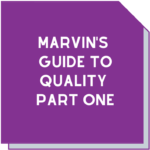Document control 101
 In our previous article we looked at documents and in particular, what makes good ones.
In our previous article we looked at documents and in particular, what makes good ones.
Good documentation forms the essential guidelines for operations in your lab.
But your documentation system isn’t just a ‘set and forget’. They require reviewing, updating and managing to ensure they’re accurate, up-to-date, and available. And that’s where a document control system comes in.
A good system allows your documents to be easily managed and contains a process to maintain your document inventory. It should be fit for your purposes, reflect the rate of change in your lab and the capabilities of your people. It starts with a sound document control system that everyone in your lab understands. This reflects how to manage information and knowledge.
A document control procedure covers:
- Document creation
- Review and approval
- Publishing and circulation
- Revision
- Removal
All documents produced and used in the lab must be included in the control system. This is a requirement of accreditation and certification standards. This includes SOPs, texts, references, manuals and external documents such as regulations and standards.
Keeping them uniform
We’re all familiar with how to create a document. In a lab setting, templates or a standard outline are extremely helpful. Current staff will quickly become familiar with the structure and new staff will find documents with the same layout easy to navigate.
Templates should include a method for identifying the version of the document and the date. Also consider adding an amendment table at the end to give a quick summary of changes made to a new issue.
Getting it out there
Once you’ve created your document, don’t just drop it into the system.
Develop a clear process for formal review and approval. Have lab management or someone with appropriate knowledge approve the document to ensure accuracy. Approval could simply be shown by a signature and date.
Publish and circulate the approved document according to a distribution list. It’s important to know who it’s going to in case of updates.
Create and maintain a master list or log of documents. Include on this list the frequency of document review and the person(s) responsible for it. Labs may also like to include who has access to each document and any security restrictions on this master list.
Revising documents
Document control means regular review and revision as needed. Establish policies that include the timeframe for revision. The procedure should cover who does this, how it’s implemented and approved and how to the revised document is to be identified.
Keep in mind that if there’s lots of copies around the lab, one could be forgotten when updates are made. Keep hard copies at a minimum and discourage ‘personal’ collections.
Removal of documents
If something has changed and documents are no longer current, they still need to be retained for reference. Collect old versions. This can be tricky if they’re in hard copy which is why your distribution list is so important.
Removal does not mean deletion so being able to access these documents for a period past their use, whether stored electronically or in hard copy, is important.
Checking the system
No doubt your lab, particularly if it’s accredited, has a document control system in place.
However, it can be helpful to look at your documents and your system to make sure it’s working as it should be.
Look at what you have and consider the following:
Do they cover all your processes and procedures?
Do they contain sufficient detail?
Can any be combined or deleted?
Do they need to be changed in terms of look and feel?
Do they make sense with the current lab iteration?
Are they helpful for the staff who use them? Ask for input from stakeholders.
Does the format work?
For reports that go externally, is it a good reflection of the lab and your business? Are they professional and clear?
Although you probably don’t need to do this process annually, the requirement for examining your system in this way should be included in your manual.
Should you go electronic?
There are plenty of vendors that offer document control system software solutions. This could come with its own set of issues including security, access and compliance. External accreditation bodies would certainly require validation of an electronic system.
For a small lab the cost would probably outweigh the perceived convenience. Larger labs would need to ensure that the navigation and retrieval is both simple and quick.
Also keep in mind the types of documents you may need to have controlled. Your software solution may need to support spreadsheets, pdfs, images. Systems may not support multiple document types and tagging for searching could be difficult.
You’ll need to train your staff in its use and have ongoing training if the system is complex.
The main question for the lab would be – does it add value?
Speaking of adding value, our services would do just that! If you have any questions about your lab systems, documents or processes, we’d love to help. Contact Maree on 0411 540 709 or email info@masmanagementsystems.com.au
You don’t have to do this alone!
Download the article Document control 101






